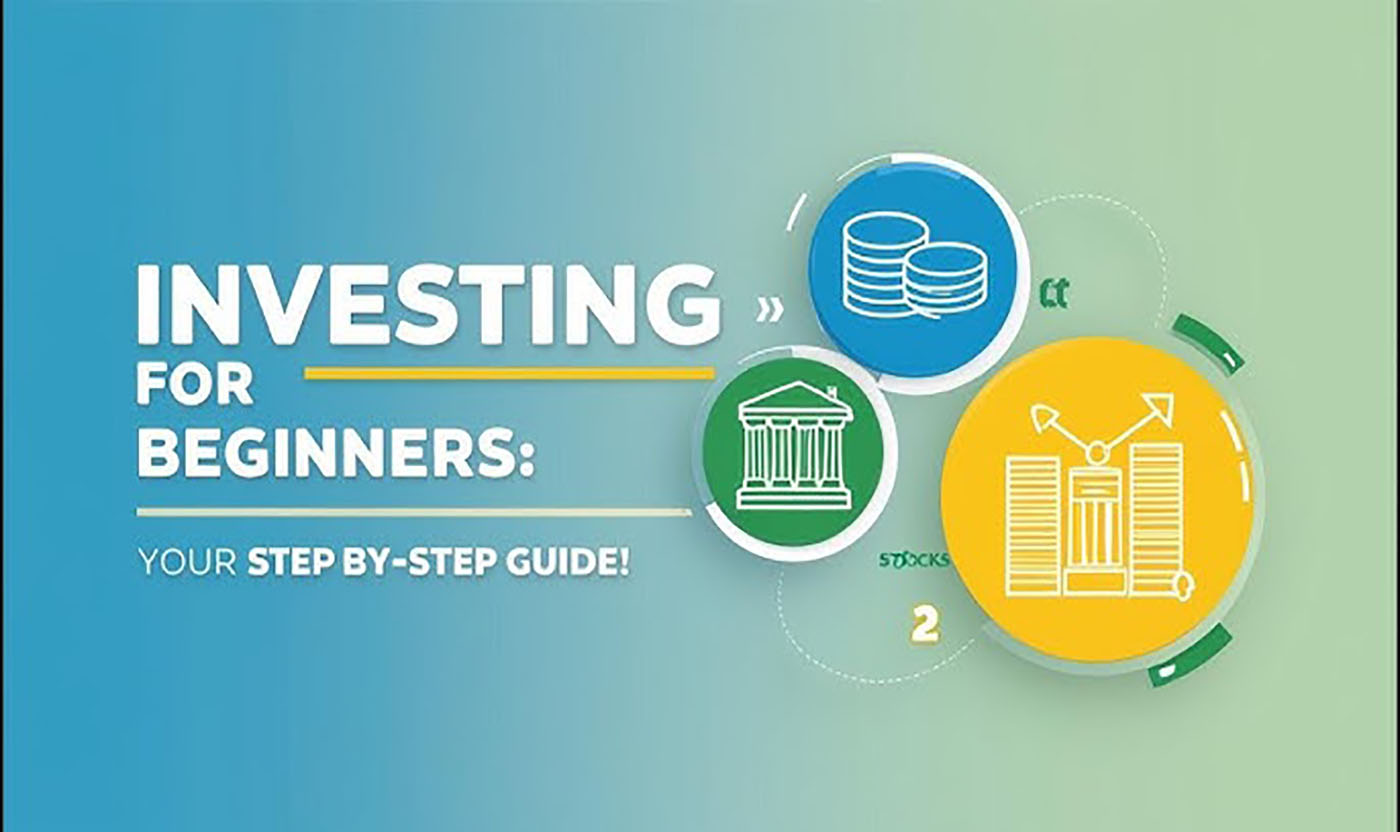2024 has been an interesting year in the investment world. With financial markets fluctuating, global economic shifts, and the rise of new investment opportunities, it’s easy to feel overwhelmed, especially for a beginner. But if you’re reading this, you’re already taking the first crucial step toward securing your financial future. Whether you’ve been thinking about investing for a while or are just starting, you may have a lot of questions: Where should I start? What types of investments should I focus on? How do I build the discipline to stick with it?
In this guide, I’m going to walk you through the essential steps that every beginner should know when starting their investment journey. From understanding the basics of different investment types to setting goals, developing strategies, and sticking with your plan during volatile times, this guide will cover it all. Let’s dive in.
1. The Importance of Starting Early
Before jumping into the technical aspects of investing, let’s start with the big picture: why is investing important, and why should you start early? The answer lies in the power of compounding. If you start investing in your 20s or early 30s, your money has more time to grow. The earlier you start, the more time you give your investments to compound, which significantly boosts your returns over the long term.
For example, investing just $200 a month starting at age 25 can grow into over $200,000 by the time you retire at age 65—assuming an average annual return of 7%, which is fairly typical for stock market investments. If you wait until you’re 35 to start investing the same amount, you’ll end up with around $125,000 by retirement. The difference? Ten years of compounding.
So, if you’re just getting started, know that you’re already ahead of the game. The key is consistency and developing a long-term mindset.
2. Understanding the Basics of Investing
Before you dive into individual stocks or exchange-traded funds (ETFs), you’ll want to have a basic understanding of the different types of investments available. Here’s a breakdown of the most common options:
a. Stocks
When you buy stock, you’re essentially buying a piece of a company. As the company grows and becomes more valuable, so too does the value of your stock. Stocks have the potential for high returns, but they also come with higher risk due to market fluctuations.
b. Bonds
Bonds are loans that you give to companies or governments in exchange for regular interest payments and the promise of getting your principal back at the end of a set period. While bonds are generally considered safer than stocks, they typically offer lower returns.

c. Mutual Funds
A mutual fund is a pool of money from many investors used to buy a diversified portfolio of stocks, bonds, or other securities. They are managed by professional fund managers. Mutual funds are a great way for beginners to gain exposure to a variety of investments without having to pick individual stocks or bonds.
d. Exchange-Traded Funds (ETFs)
ETFs are similar to mutual funds in that they hold a collection of investments. However, they are traded on the stock exchange like individual stocks, offering greater flexibility. ETFs are often more cost-efficient than mutual funds because they usually have lower management fees.
e. Real Estate
Investing in real estate—whether through physical properties or Real Estate Investment Trusts (REITs)—can be a lucrative way to build wealth. While real estate requires more initial capital and effort than other investment types, it offers the potential for both passive income and long-term appreciation.
f. Cryptocurrencies
Cryptocurrencies, like Bitcoin and Ethereum, are a newer and more volatile investment option. While they have made many investors a lot of money, they come with significant risk due to their volatility and the uncertainty surrounding their future value. Cryptocurrencies can be an interesting addition to a diversified portfolio, but they should be approached with caution, especially for beginners.
3. How to Choose Your First Investments
Now that you know the basics, the next step is figuring out where to put your money. For beginners, it’s generally best to stick with low-cost, diversified investment options until you gain more experience and confidence. Here are some good options to consider:
a. Index Funds and ETFs
Index funds and ETFs are excellent starting points because they provide instant diversification. Instead of picking individual stocks, you invest in a fund that holds a broad market index, such as the S&P 500. This ensures that your investment mirrors the performance of the entire market, which historically has gone up over time.
Popular index funds and ETFs include:
- Vanguard S&P 500 ETF (VOO)
- iShares Core S&P 500 ETF (IVV)
- Schwab U.S. Large-Cap ETF (SCHX)
These funds allow you to invest in a range of industries and companies without having to choose individual stocks. They also come with low management fees, which is crucial for maximizing your returns over the long term.
b. Robo-Advisors
For beginners who want a more hands-off approach, robo-advisors are a great option. These digital platforms, like Betterment and Wealthfront, use algorithms to manage your portfolio based on your risk tolerance and financial goals. Robo-advisors are affordable, low-maintenance, and can help you build a diversified portfolio without much effort on your part.
c. Target-Date Funds
If you’re investing for retirement, a target-date fund might be right for you. These funds automatically adjust your asset allocation (how much you invest in stocks vs. bonds) based on your target retirement date. As you get closer to retirement, the fund gradually becomes more conservative, reducing your risk.
Popular target-date funds include:
- Vanguard Target Retirement Funds
- Fidelity Freedom Funds
These funds are a great choice if you want an automated, set-it-and-forget-it approach to investing.
d. Individual Stocks (Once You’re Comfortable)
Once you’re comfortable with investing and have a solid understanding of how the markets work, you can start exploring individual stocks. For beginners, it’s advisable to start with large-cap stocks from established companies that have a history of stability and growth. These stocks tend to be less volatile than smaller companies.
A few well-known large-cap stocks to consider might include:
- Apple (AAPL)
- Microsoft (MSFT)
- Johnson & Johnson (JNJ)
For those interested in individual stocks, I recommend checking out Yahoo Finance (finance.yahoo.com) for stock quotes, news, and analysis, and Seeking Alpha (seekingalpha.com) for investment research and opinion articles.
4. Setting Investment Goals
One of the keys to successful investing is setting clear, achievable goals. Without goals, it’s easy to lose track of why you’re investing in the first place. Ask yourself:
- What are you investing for? Is it retirement, a down payment on a house, or building wealth for the future?
- What is your time horizon? Are you investing for the short term (1-5 years), medium term (5-10 years), or long term (10+ years)?
- What level of risk are you comfortable with? Understanding your risk tolerance is essential in determining which investments are right for you.
Once you’ve established your goals, make sure they are SMART: Specific, Measurable, Achievable, Relevant, and Time-bound. For example, “I want to save $100,000 for retirement in 30 years” is a SMART goal. This type of clarity will help you stay focused and motivated.
5. The Importance of Dollar-Cost Averaging
One of the best ways to stay consistent with your investments is to practice dollar-cost averaging (DCA). DCA means investing a fixed amount of money at regular intervals, regardless of market conditions. This strategy helps smooth out the effects of market volatility and reduces the temptation to time the market, which is nearly impossible to do consistently.
For example, instead of trying to time the market by investing all your money at once, you might invest $500 every month into an index fund. Some months the market may be up, and others it may be down, but over time, this approach helps you buy more shares when prices are low and fewer when they are high.
Robo-advisors like Betterment and Wealthfront automatically implement dollar-cost averaging in your portfolio, making it easy to stick to a consistent investment plan.
6. The Psychology of Investing: Sticking with It
Perhaps one of the most difficult aspects of investing, especially for beginners, is staying the course during market downturns. The stock market can be volatile, and it’s easy to get caught up in emotions like fear and greed. Here are some tips to help you stay grounded:
a. Have a Long-Term Mindset
Remember that investing is a marathon, not a sprint. The stock market will go through ups and downs, but over the long term, it tends to rise. Stick to your investment plan, and don’t panic during short-term volatility.
b. Avoid Trying to Time the Market
Many new investors try to time the market, buying when they think prices are low and selling when they think prices are high. This is incredibly difficult to do consistently and can often lead to losses. Stick with your dollar-cost averaging strategy and focus on the long-term growth of your investments.
c. Regularly Reassess Your Portfolio
While it’s important to stay the course, it’s also wise to regularly review your portfolio to ensure it aligns with your goals and risk tolerance. As you get closer to your target date (for example, retirement), you may want to shift your portfolio to become more conservative by increasing your bond allocation and reducing your stock holdings.
For tracking your portfolio, I recommend using platforms like Personal Capital (www.personalcapital.com) or Morningstar (www.morningstar.com) to get an overview of your investments and their performance.
7. Starting Strong and Sticking with It
Investing is a journey, not a destination, and getting started is often the hardest part. But once you’ve built the habit of investing consistently and sticking to your strategy, you’ll see the power of compound growth over time. By setting clear goals, choosing the right investment options, practicing dollar-cost averaging, and maintaining a long-term perspective, you’ll be well on your way to financial success.
Investing may feel intimidating at first, but with the right tools and mindset, you can make it an empowering and rewarding experience. So, take a deep breath, start small, and begin your investment journey today. Your future self will thank you!



